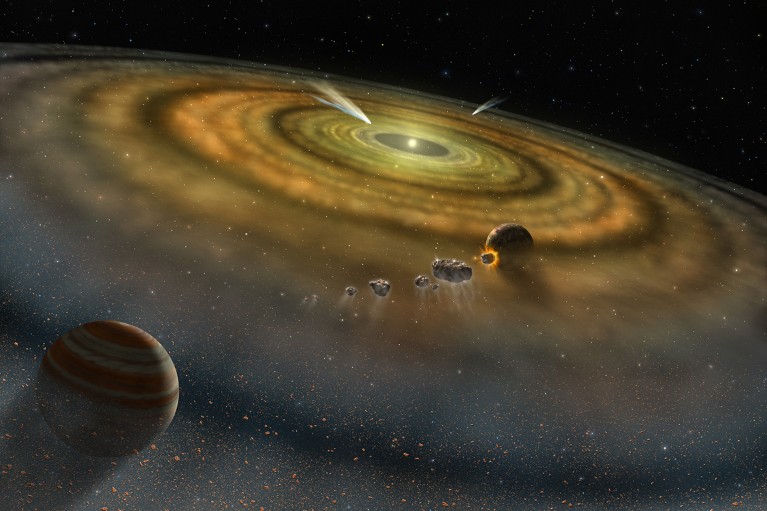James Webb Space Telescope Feed Post
Nature | How worlds are born: JWST reveals exotic chemistry of planetary nurseries
The telescope is delivering a cascade of insights about the ‘protoplanetary’ disks where planets take shape. The James Webb Space Telescope (JWST) is aweing scientists and the public alike with its spectacular images of distant galaxies and its discoveries of dozens of new black holes. Yet JWST is also rewriting scientists’ understanding of objects on a slightly smaller, more relatable scale: how planets form from swirls of gas and dust around young stars. Such ‘protoplanetary’ disks are what the environs of the Sun would have been like 4.6 billion years ago, with planets coalescing from the whirling material around an infant star. JWST is revealing how water is delivered to rocky planets taking shape in such disks. It’s providing clues to the exotic chemistry in these planetary nurseries. And it has even found fresh evidence for a cosmic hit-and-run in one of the most famous debris disks, encircling the star Beta Pictoris. Other telescopes have probed many of these disks before. Astronomers have taken impressive pictures of dark gaps etched like grooves in a bright vinyl record, marking where planets are being born and clearing out gas and dust from the disk. But JWST’s unprecedented vision allows astronomers to probe these realms in original ways. “It’s really as if you’re picking out new glasses — you put them on and suddenly, wow, you see much more,” says Andrea Banzatti, an astronomer at Texas State University in San Marcos. Read more at Nature (click below).
